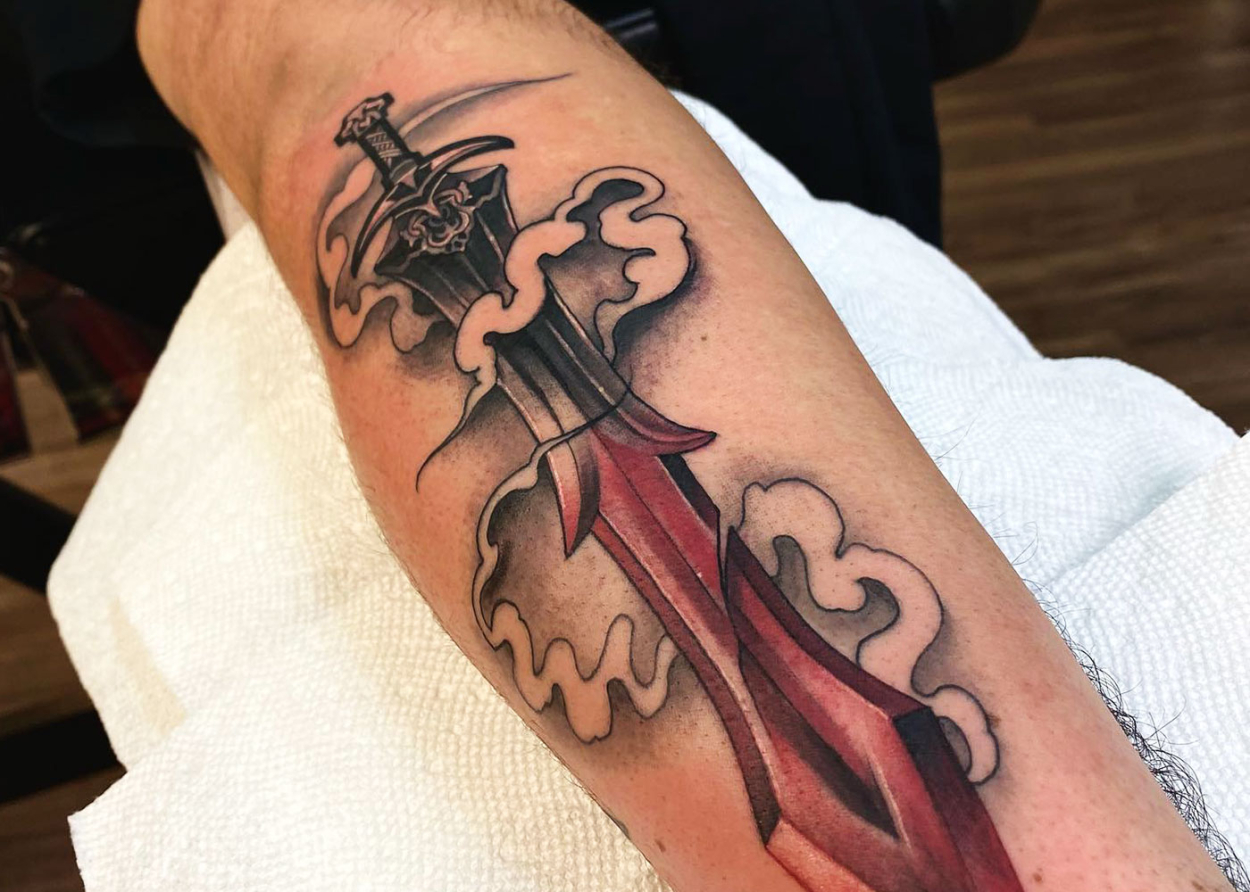
Tattoo design is a multidisciplinary field that encompasses various subjects and skills. While there is no standardised curriculum for tattoo design, the following subjects are commonly taught or studied by aspiring tattoo artists:
Tattoo artists need a solid foundation in art, including understanding elements like line, shape, form, colour theory, composition, and perspective. Art fundamentals help in creating aesthetically pleasing and visually balanced tattoo designs.
Tattoo artists learn different drawing techniques such as sketching, shading, stippling, hatching, and cross-hatching. These techniques help them create precise and detailed designs on paper before transferring them onto skin.
Knowledge of human anatomy is crucial for designing tattoos that flow with the body's natural contours and proportions. Understanding the skeletal structure, muscle groups, and how they interact helps tattoo artists create anatomically accurate and visually appealing designs.
Tattoo artists study design principles such as balance, symmetry, rhythm, contrast, and focal points. These principles guide them in creating well-balanced and visually engaging tattoos that suit the client's body and personal preferences.
There are numerous tattoo styles, and artists often specialise in one or more. Some popular styles include traditional, realism, blackwork, neo-traditional, Japanese, watercolour, geometric, and illustrative. Artists learn about the characteristics, techniques, and history of each style.
Artists learn about the different types of tattoo machines, needles, pigments, and other equipment used in the tattooing process. Safety and hygiene protocols are also emphasised to ensure the well-being of both the artist and the client, including sterilisation techniques, infection control, and proper handling of equipment.
With advancements in technology, digital tools have become integral to the tattoo design process. Artists often learn to use design software, such as Adobe Photoshop or Procreate, to create digital mock-ups and refine their designs before transferring them to the skin.
Tattoo artists develop skills in effectively communicating with clients to understand their ideas, preferences, and expectations. They learn to translate clients' concepts into cohesive designs while providing guidance on the feasibility and aesthetic aspects of the tattoo.
Tattoo artists explore the history of tattooing across different cultures and time periods. Studying the symbolism, traditional techniques, and motifs helps artists develop a broader understanding of tattoo design and incorporate culturally significant elements into their work.
Tattoo artists often receive guidance on the business side of the industry, including setting up a studio, managing appointments, pricing, marketing, and maintaining client relationships. This knowledge helps artists establish themselves professionally and run a successful tattooing business.
It's important to note that the specific subjects and depth of study can vary depending on the educational institution or mentorship program, as well as the artist's individual interests and style preferences. Continuous learning and self-improvement are also crucial for tattoo artists to stay updated with evolving techniques, styles, and industry standards.